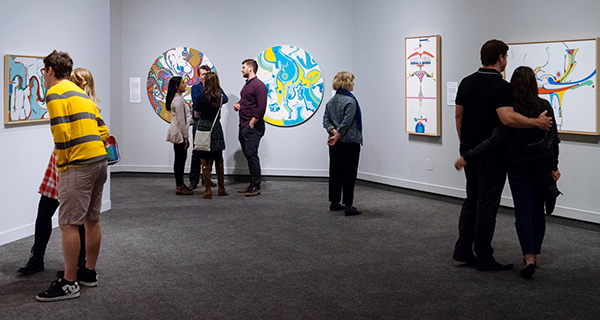 After six years as president and CEO of Glenbow, Donna Livingstone is leaving to become CEO of the Whyte Museum of the Canadian Rockies.
After six years as president and CEO of Glenbow, Donna Livingstone is leaving to become CEO of the Whyte Museum of the Canadian Rockies.
Glenbow board of governors chair Irfhan Rawji saluted her efforts at stabilizing the financial situation “and allowing us the opportunity to continue on our way to being a world-class public art museum.”
And so Calgary philanthropist Eric Lafferty Harvie’s gift to Albertans again begins the process of celebrating its rich heritage and redefining its future.
As Canada’s largest non-governmental museum, the Glenbow has, since opening in 1966, championed its founder’s eclectic and Scottish interdisciplinary intellectual roots.
Harvie, who died in 1975, wanted the Glenbow to be the library, archives, art gallery and museum of the Canadian West. The Harvies became Western Canada’s wealthiest family virtually overnight – on Feb. 13, 1947, when the Leduc No. 1 oil field was discovered under pastures where Eric owned subsurface rights.
Harvie was a successful Calgary lawyer who often took real estate deeds in lieu of cash for his labours. And he had a keen eye for bargain properties that came with subsurface mineral rights.
Oil completely changed Alberta’s economy in the following decades. Realizing that with great wealth came great responsibility, Harvie and his family began a tradition of giving back to Alberta and to Canada.
The Glenbow Museum, named after the Harvies’ ranch just upstream on the Bow River from Calgary, became an early magnet for his family’s philanthropic attention.
Glenbow’s collecting included everything from Depression glass to Blackfoot ceremonial robes to Group of Seven paintings to bundles of settlers’ letters home.
Harvie was famous for telling his collectors to “Spend money like drunken sailors!” And they did.
Before they finished, the collections also included objects from cultures around the world, and a magnificent collection of gems and minerals. While the dollar value of the Glenbow’s collections (which were donated to the people of Alberta in 1966) is a matter of speculation, it’s enormous.
Hugely instrumental in my figuring out what drove Harvie’s collecting eclecticism was finding a copy of the Edinburgh Review, a journal of Scottish thought and philosophy, early in my tenure as Glenbow CEO (I was there from Jan. 1, 2000, to Dec. 31, 2007). The lead article focused on the interdisciplinary roots of the Scottish master of arts degree (really a bachelor’s degree upgraded after graduation by the payment of a few pounds).
For several hundred years prior to the advent of Margaret Thatcher’s U.K. Conservative government in 1979, Scottish universities maintained strong traditions of interdisciplinary study – unlike Oxford and Cambridge, where academic specialization began almost immediately at age 18.
Consequently, the Scottish mind was trained to favour eclectic, cross- and inter-disciplinary approaches to thinking. Scottish museums, libraries and galleries followed suit. Specialization, when it occurred, was undertaken in graduate school, often only with the permission of one’s fellow scholars and professors.
And thus the educated Scottish citizens, often immigrants to places like Canada, were much more broadly prepared than their English equivalents.
This was not lost on the Hudson’s Bay Co., which deliberately recruited Scots in places like the Orkney Islands, because they could multi-task with distinction in the fur trade. This included camping under canvas, learning Indigenous languages, paddling canoes, keeping the books of account, and marrying into leading Indigenous families.
The English Bay men preferred to stay in the Montreal and London board rooms.
As a early settler in Calgary (which was named after a wee Scottish hamlet on the Isle of Mull), and a frequent weekend visitor to Banff (named after another wee Scottish town in Aberdeenshire), Harvie was happy in his new Highlands.
I believe his Glenbow pattern of collecting followed his Scottish interdisciplinary mind. Consequently, Glenbow’s disciplinary origins are Scottish to the core.
So when the venerable 53-year-old institution announces a plan to specialize in “world-class public art,” the Highland Scot in me rebels.
Just like the 1746 Battle of Culloden, fought near Inverness, the Scottish way of viewing the world is being confronted by the English forces of specialization.
What tradition do you favour?
Mike Robinson has been CEO of three Canadian NGOs: the Arctic Institute of North America, the Glenbow Museum and the Bill Reid Gallery. Mike has chaired the national boards of Friends of the Earth, the David Suzuki Foundation, and the Canadian Parks and Wilderness Society. In 2004, he became a Member of the Order of Canada.
The views, opinions and positions expressed by columnists and contributors are the author’s alone. They do not inherently or expressly reflect the views, opinions and/or positions of our publication.


